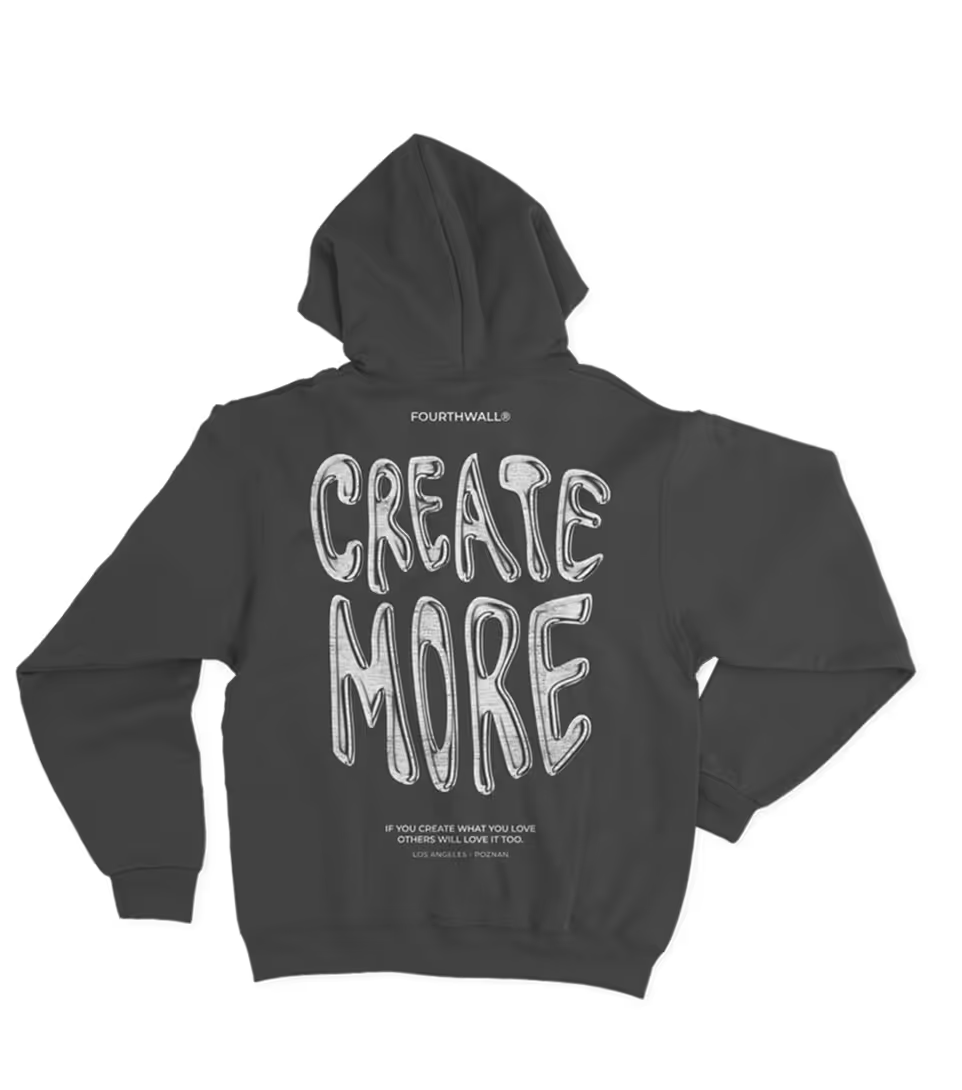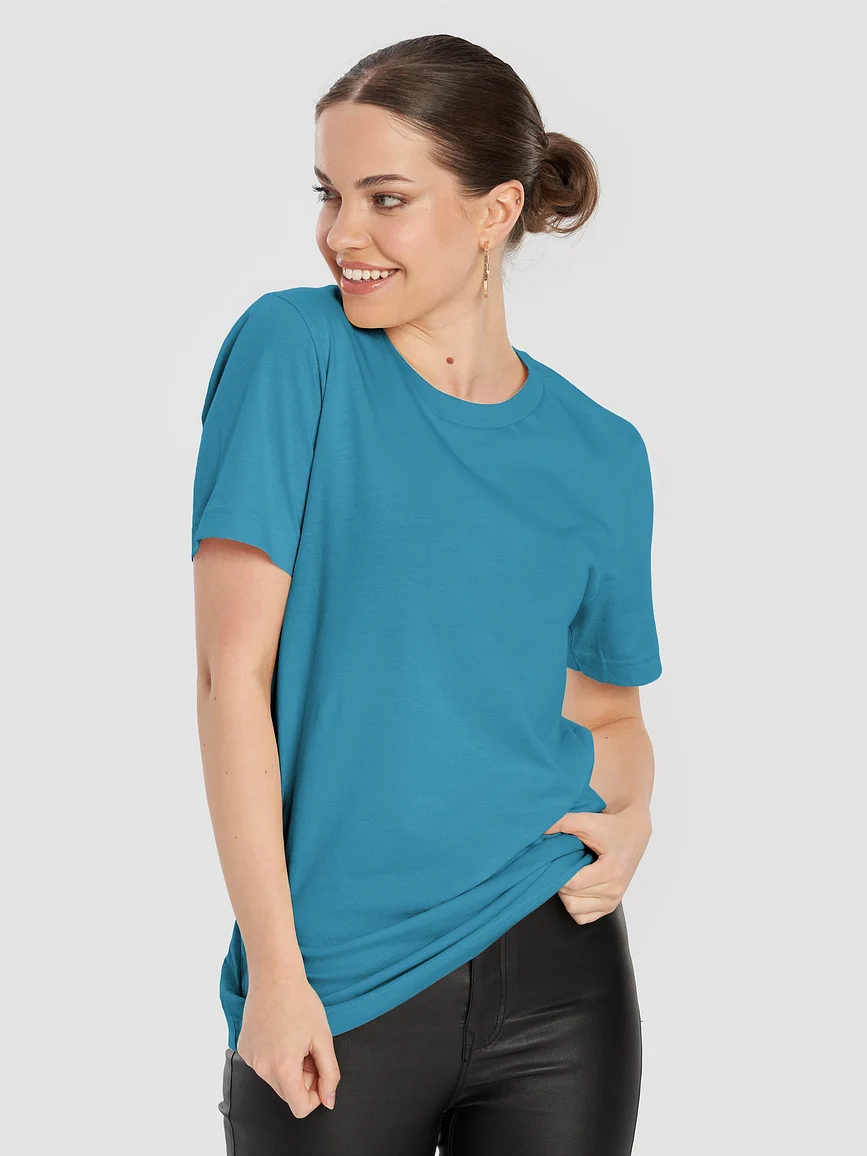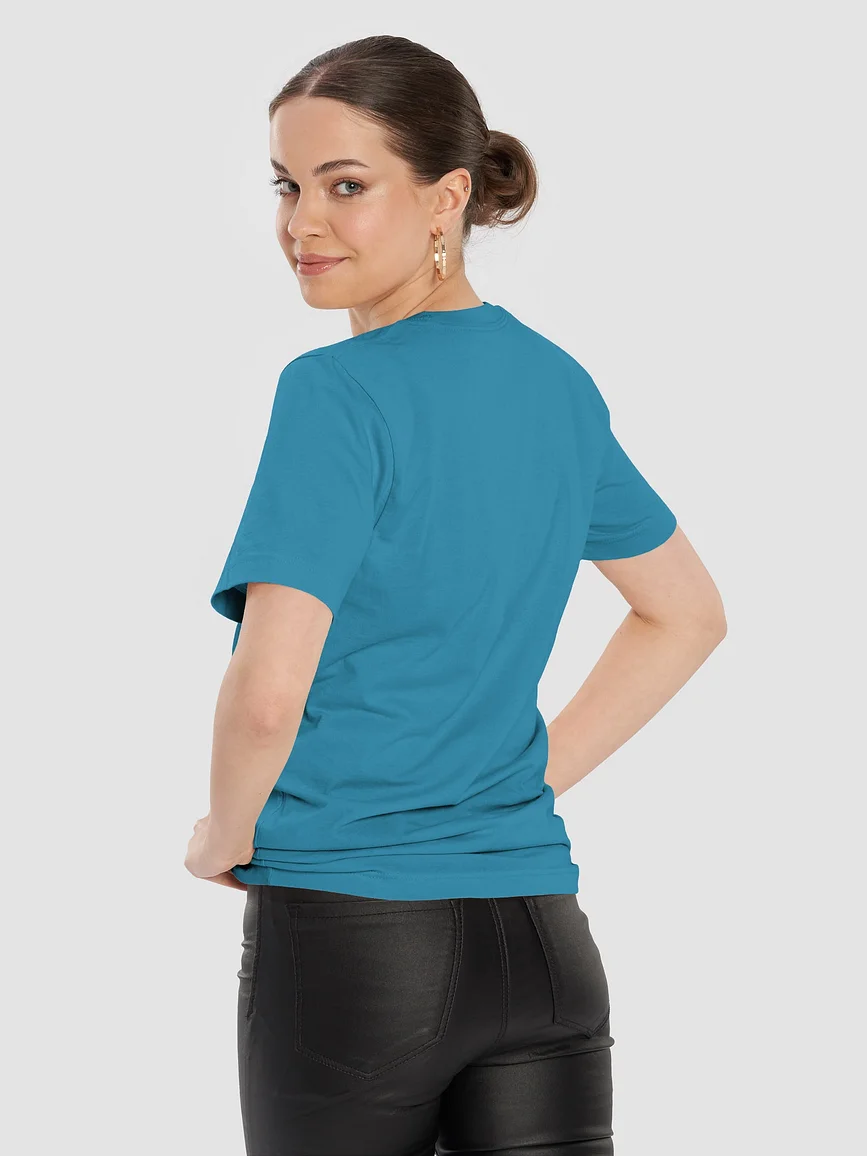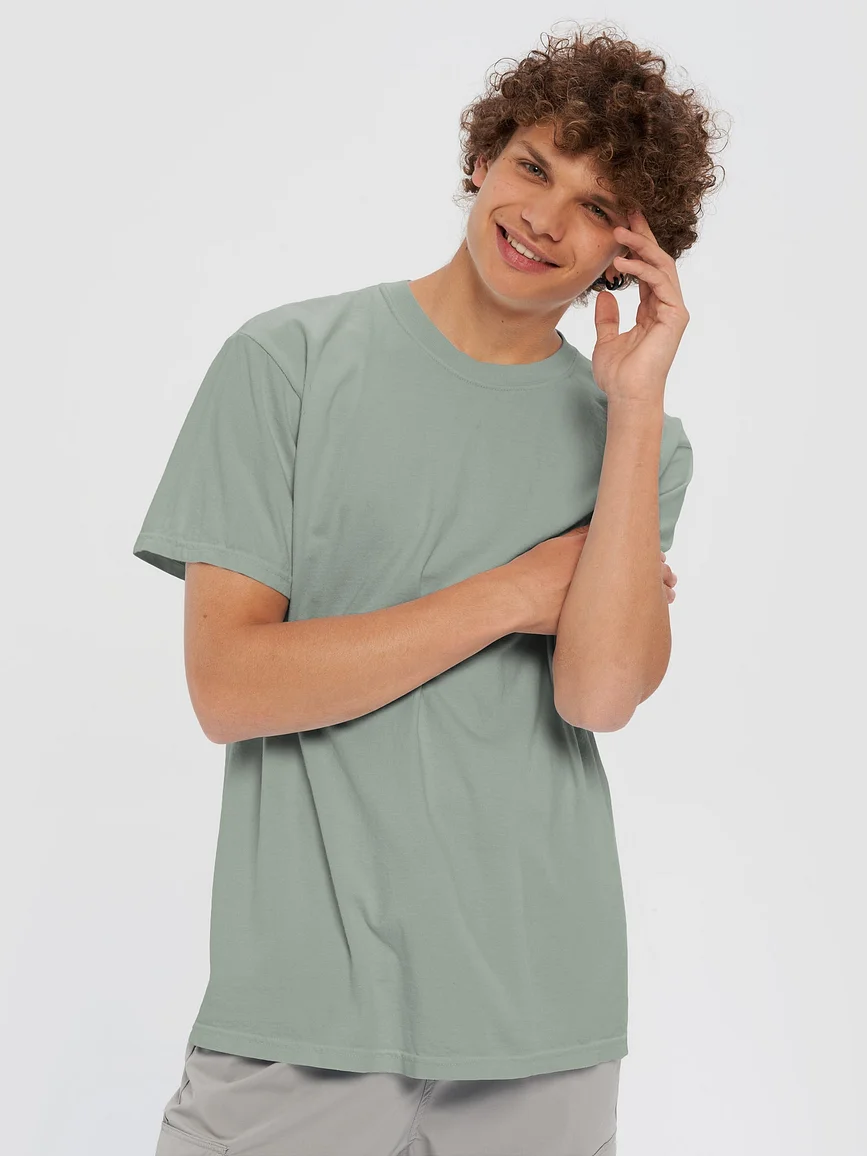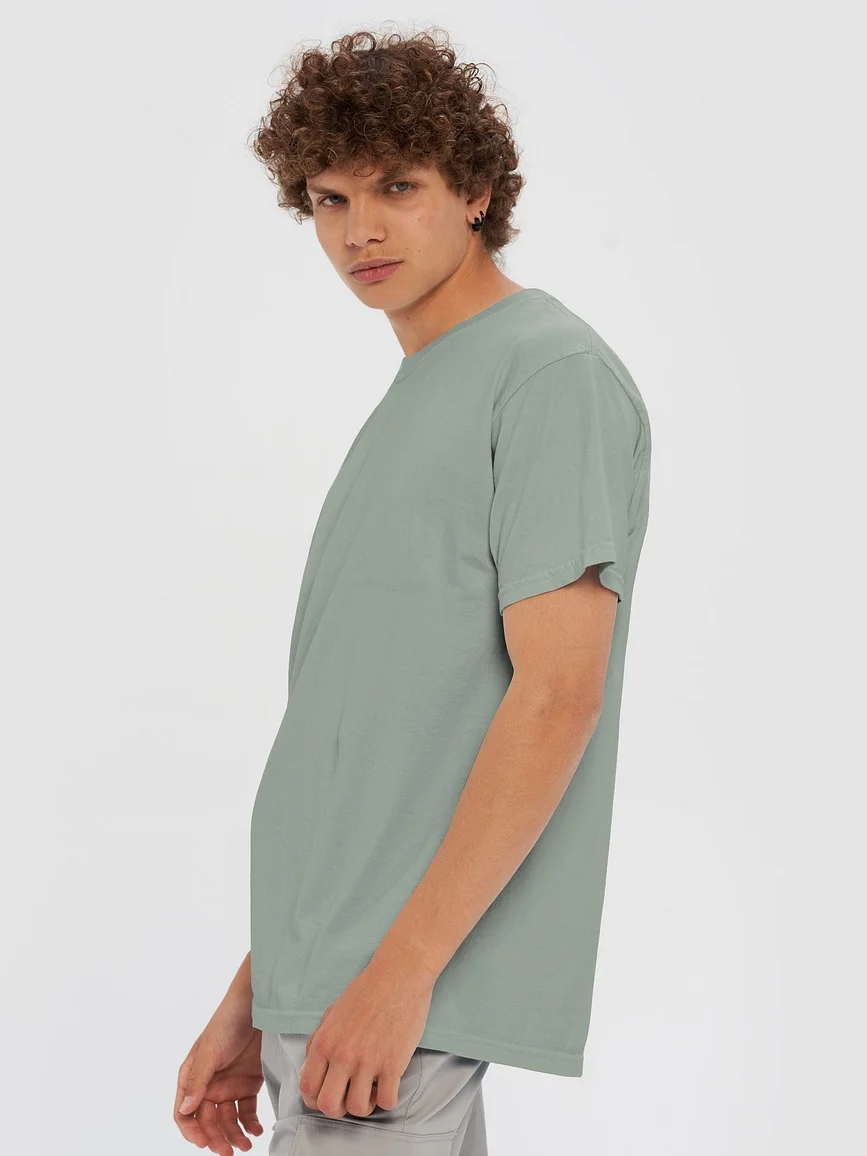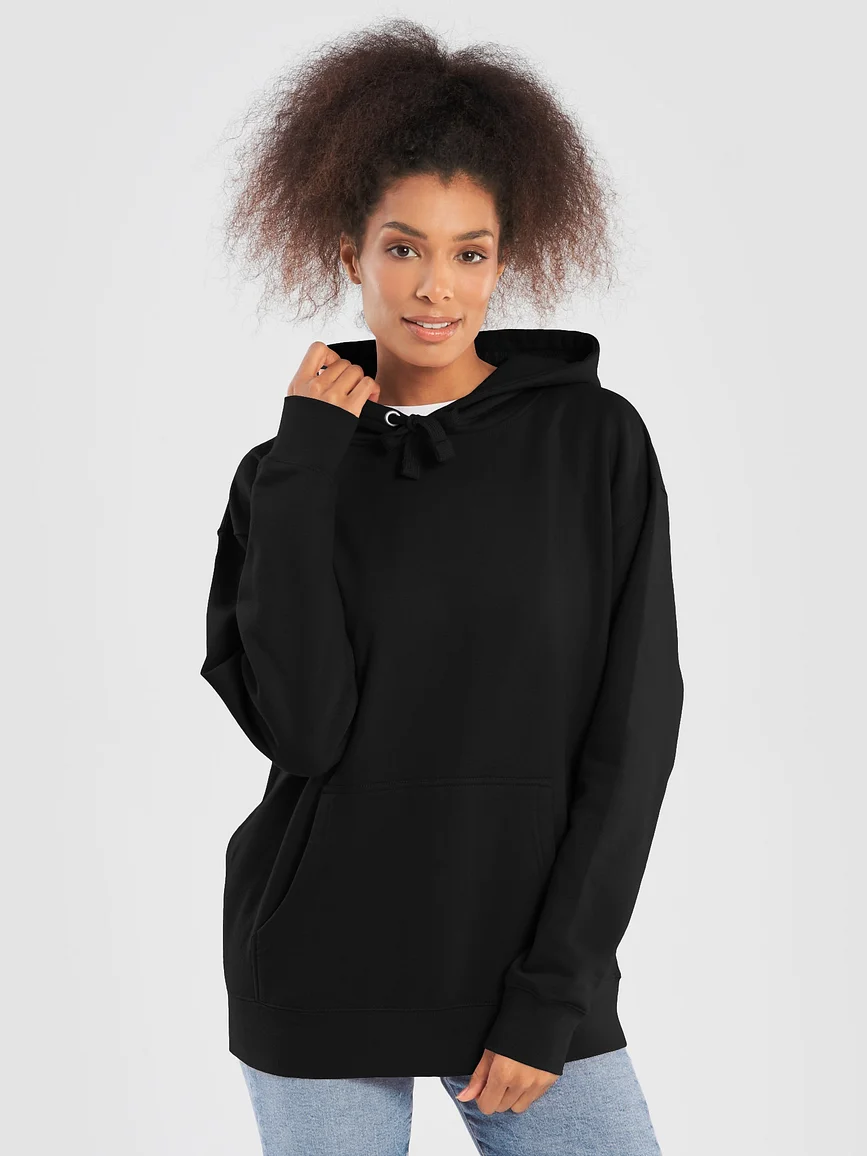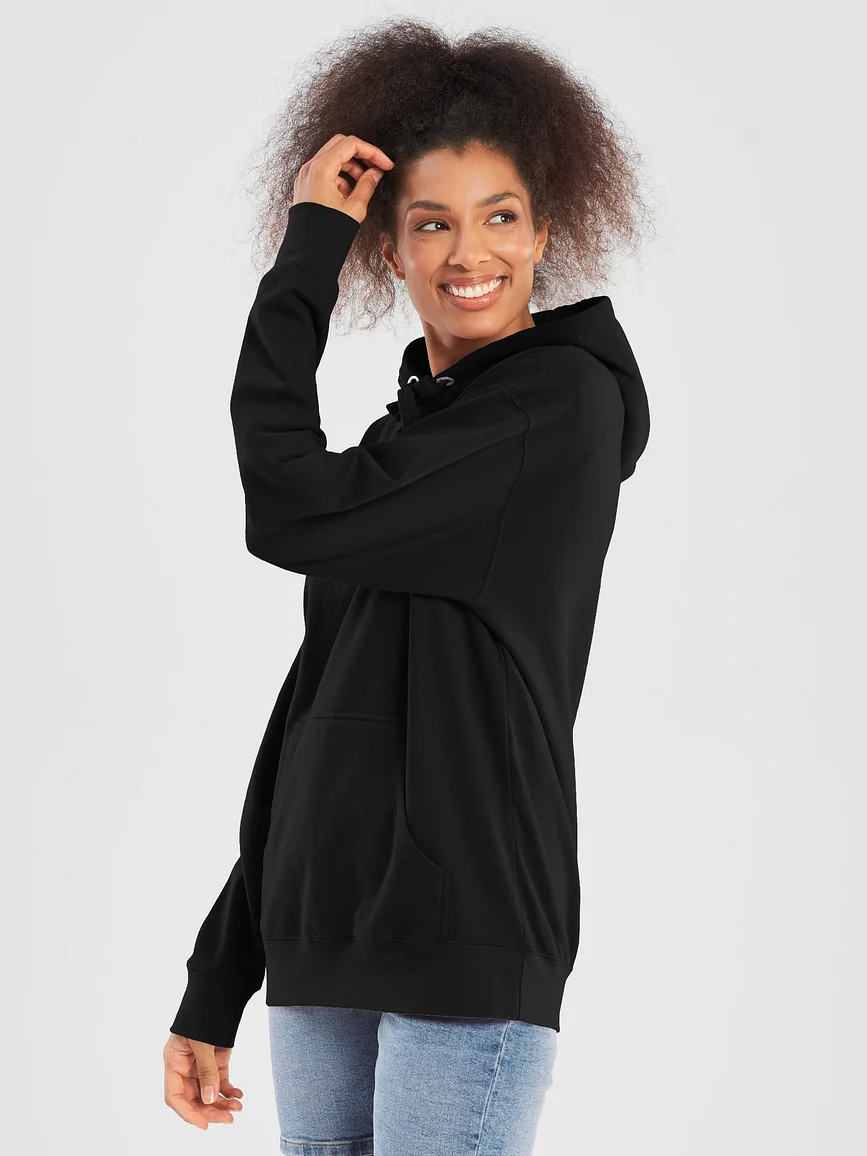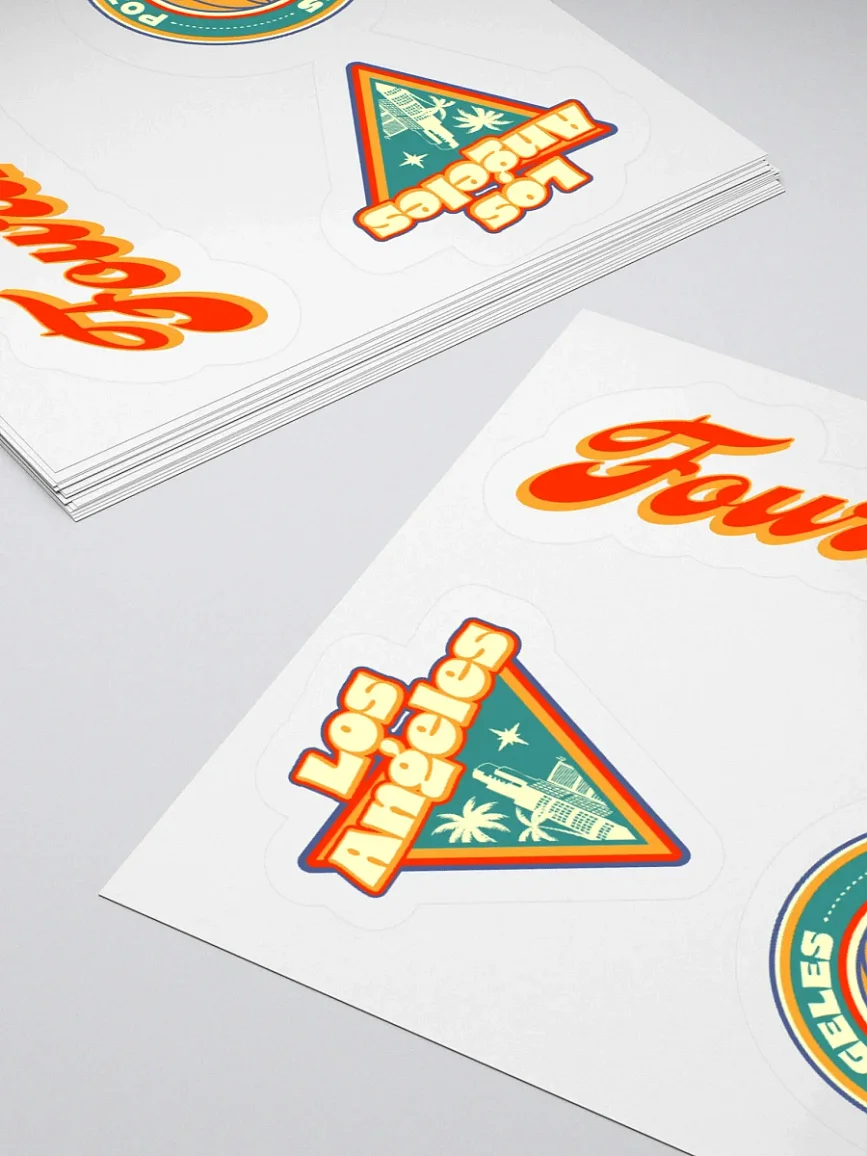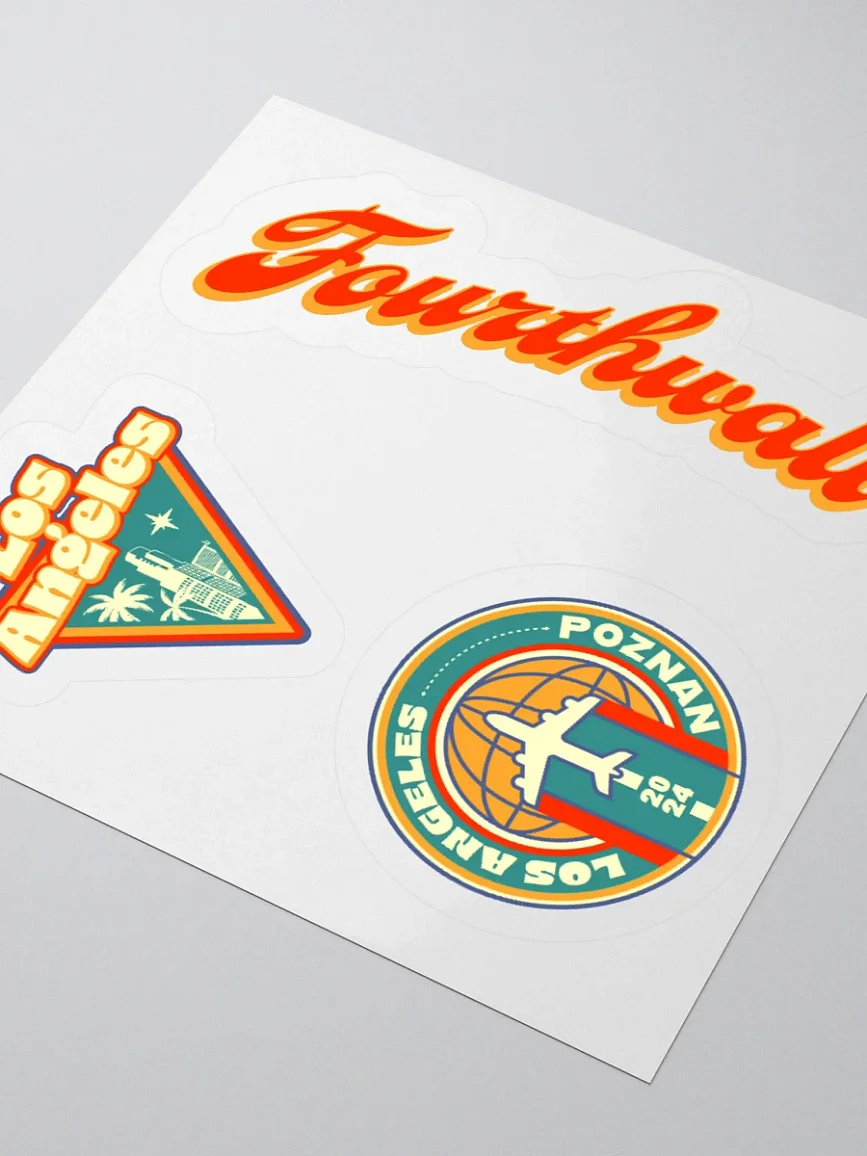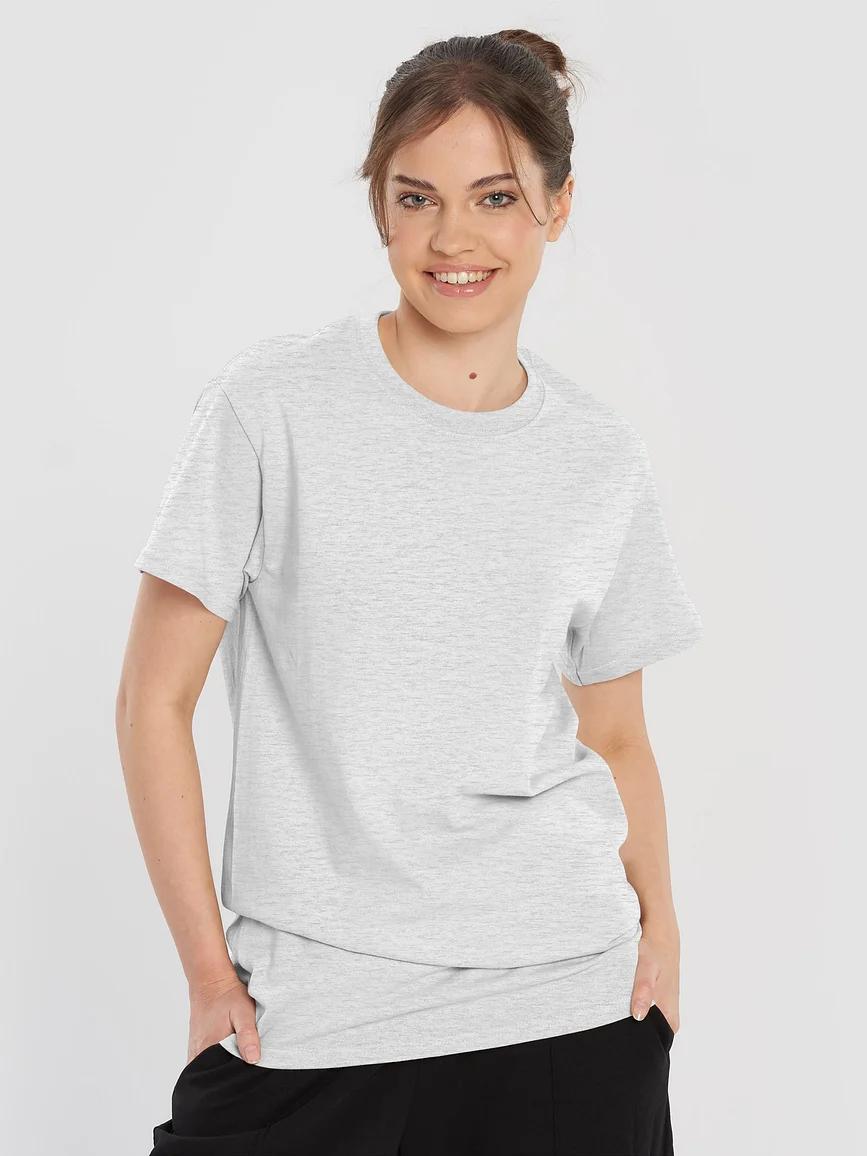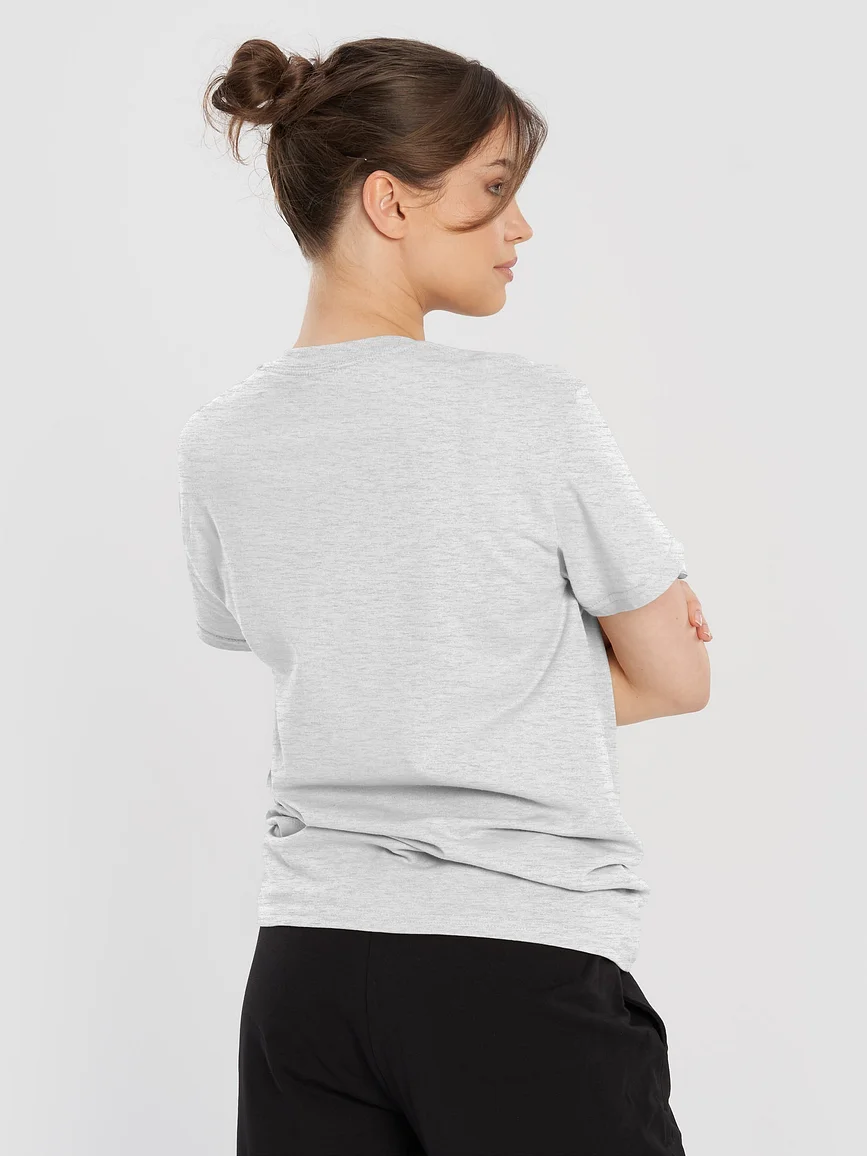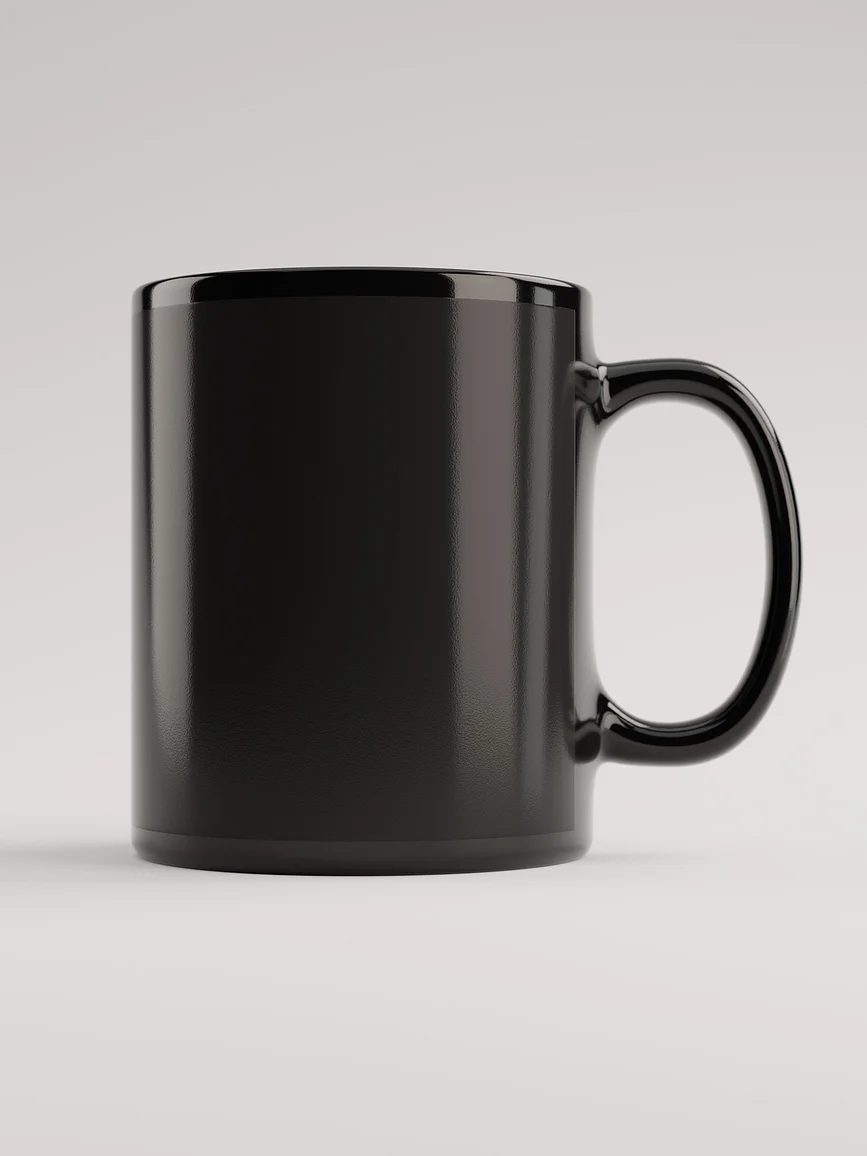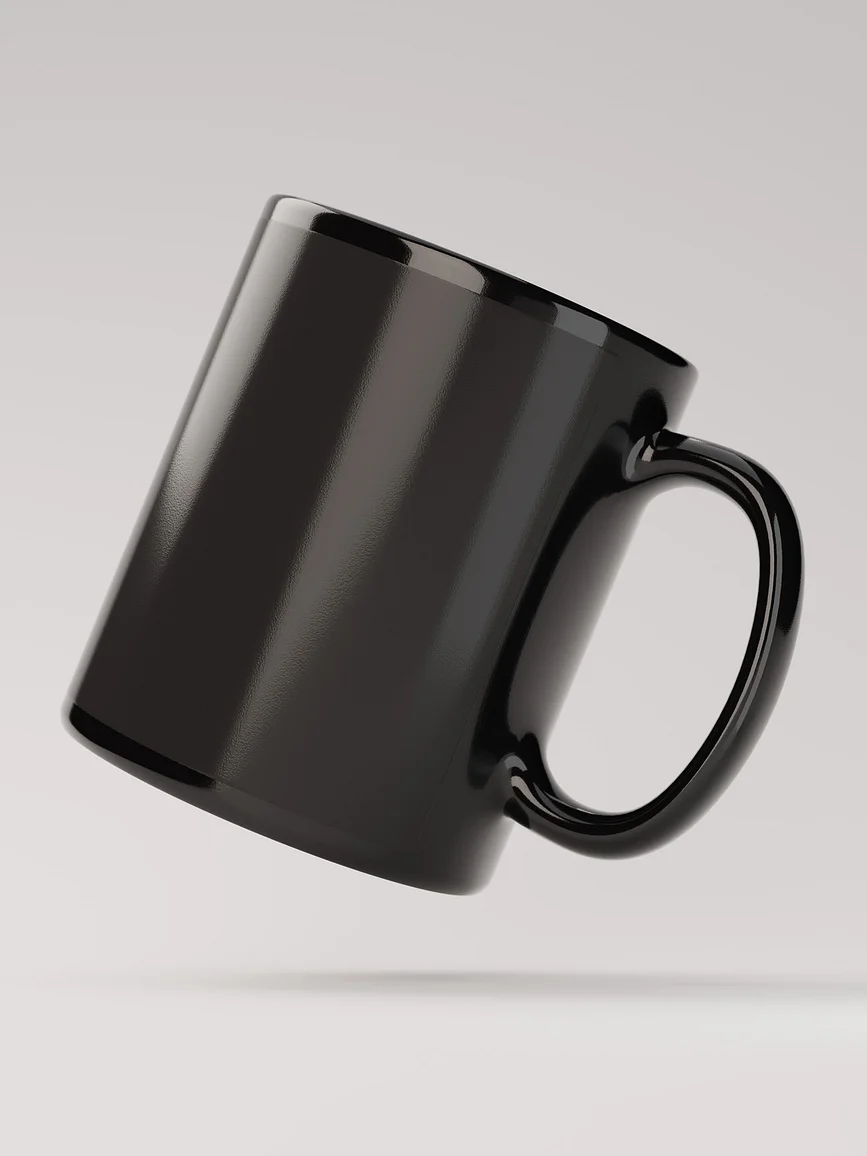How to Go Live on YouTube

With nearly 2.5 billion monthly active users (stat via SocialBlade), YouTube is a behemoth in online video - which means a lot of opportunity for you!
Whether you’re a content creator, influencer, musician, gamer, or business, YouTube is a powerful tool that’s only increasing in popularity. And YouTube's live streaming component lets you engage directly with your audience, build a community, and grow your YouTube channel in real time.
Want to share your music, get fans hyped about your gameplay, show off a new product in your store, or announce a special event? YouTube live streaming is perfect for all of the above and more, letting you go live via YouTube Studio to create interactive online experiences for your audience that foster engagement and also help you increase your YouTube watch time. You can even connect your YouTube channel to an ecommerce platform like Fourthwall, so your viewers can buy your custom merch via YouTube Shopping as they watch your streams!
So let’s get you started live streaming on your YouTube channel - we’ve got all the info on live streaming gear from webcams and microphones to software, plus tips on streaming requirements, stream keys, setup instructions, tags and titles, and more!
What is YouTube Live?
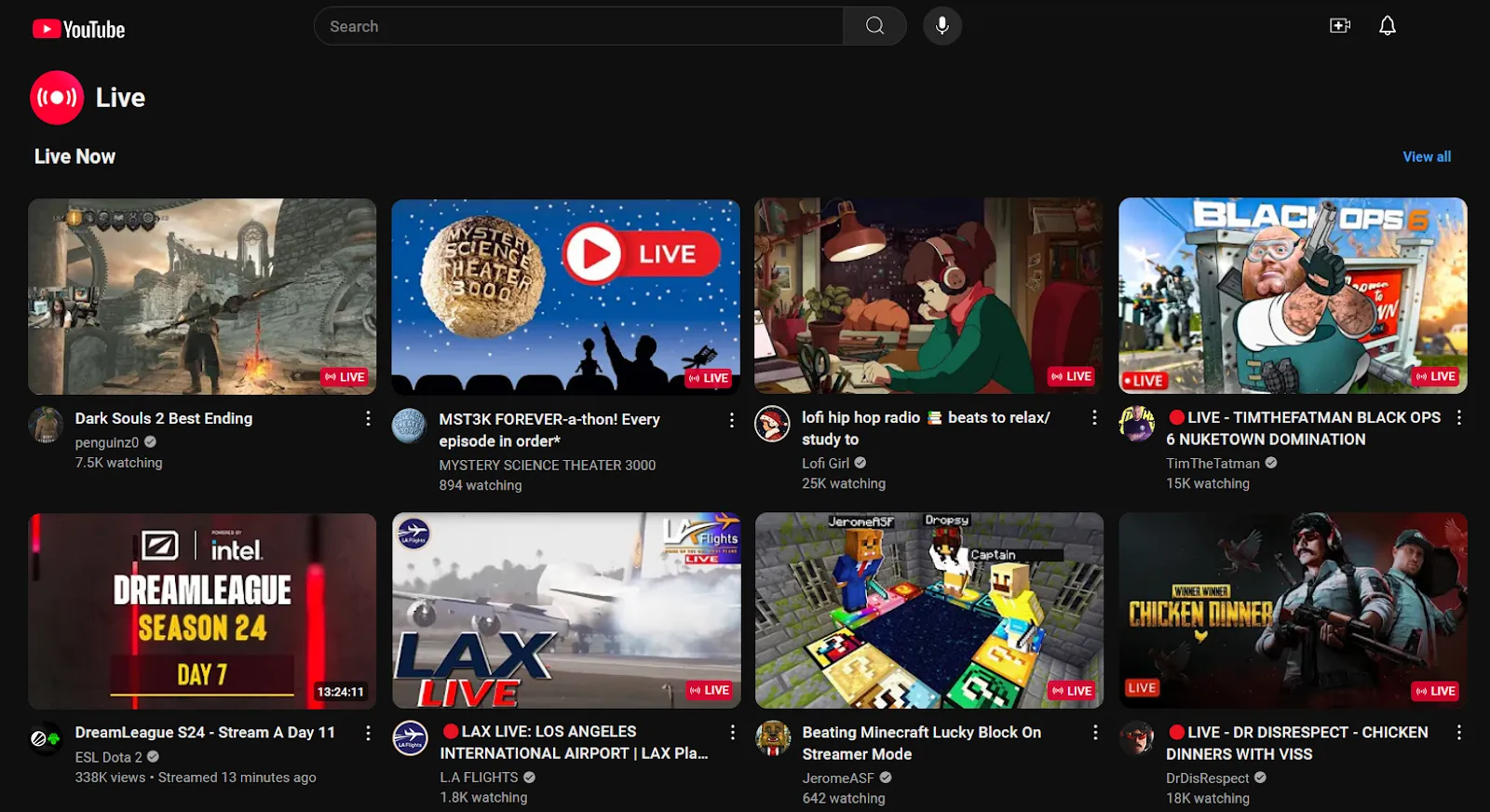
YouTube Live is simply YouTube’s own live streaming feature. It enables you to broadcast live video content directly to your YouTube channel, your subscribers, and new viewers. It’s great to have a roster of uploaded video on YouTube! But adding in YouTube live streaming lets you additionally offer your viewers a real time, live interactive experience, where they can watch you while participating via YouTube live chat.
YouTube Live can be used for a huge variety of content types, from gaming live streams to music performances, IRL (in real life) travel experiences, special events, product launches, or even just a casual sit down Q&A live streaming session with your fans. Basically, any creator can probably find something to live stream to their viewers on their YouTube channel!
YouTube Live also offers engaging features like Super Chat and Super Stickers, live polls and Q&As, pinned messages, and more, helping an equally wide range of creators build stronger connections with their viewers through these live, real time broadcasts.
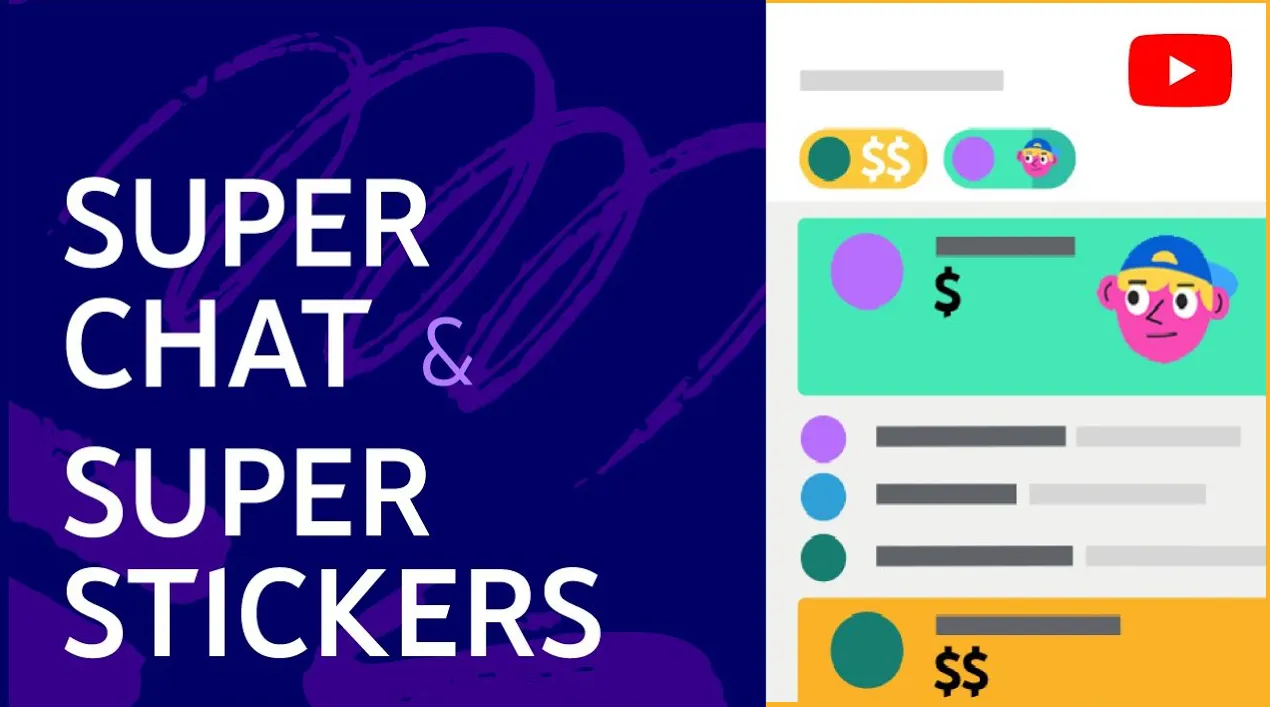
YouTube’s Super Chat and Super Stickers features help content creators both earn money and connect with their audience during live streams.
The Benefits of Going Live on YouTube
Real Time Interactions
Unlike “regular” uploaded videos, YouTube live streaming allows you to go live and chat directly with your audience, responding to comments, answering questions, and interact with your viewers instantly. This level of engagement is excellent for growing a fan base of loyal followers!
Increased Watch Time
YouTube's algorithm rewards uploaded videos with high watch times - and by their own nature, live streams tend to generate longer viewer sessions than "regular" video on YouTube. That means your YouTube live streams can greatly help boost your channel's rankings in YouTube search results and recommendations.
Community Building
By regularly going live on YouTube, you can cultivate a community that will look forward to your live streamed broadcasts (as well as your channel's pre-produced videos), and an audience that will become ongoing fans of your content.
Potential Revenue
YouTube offers several ways to monetize your live streams once you qualify; requirements to unlock them start at 1,000 subscribers and 4,000 hours of watch time over 12 months. Super Chat and Super Stickers allow viewers to pay for highlighted messages in live chat, and tiered YouTube Channel Memberships (that you can promote during your live streams) provide recurring revenue. Ads can also be integrated into your live stream broadcasts, allowing you to earn money from ads that are displayed during your live streams.
YouTube Streaming Requirements
Before you can start live streaming on YouTube, you’ll need to reach YouTube’s streaming eligibility requirements:
- Your YouTube account must be verified to enable live streaming (YouTube will usually just send you a verification code by text or voice call.)
- There is no minimum subscriber count to stream on YouTube from your desktop; but if your channel's going live from a mobile device (smart phone), you’ll need at least 50 subscribers if you’re 18 or over (ages 13-17 need 1,000 subscribers.)
- You must have no live streaming restrictions on your YouTube account in the past 90 days.
- And keep in mind that your YouTube account may require a 24 hour wait period before you can start your first YouTube live stream.
YouTube Streaming Gear Checklist
Your Streaming HQ
You can choose from several options for your main streaming headquarters. Your YouTube channel can go live from a desktop computer, laptop, gaming console, or smart phone, depending on your needs. A computer is much more versatile for complex streams that use third party software; gaming consoles often have built-in streaming capabilities; and phones are great if you’re streaming IRL outdoor content or a live event.
Internet Connection
Stable internet connections are crucial for smooth streams! Viewers generally understand the occasional technical difficulty, but if your live streams cut out too often, you’ll start losing your audience. You should have a minimum internet upload speed of at least 3 Mbps for 1080p resolution at 30fps (high resolution video) to go live, but higher speeds are recommended for better quality.
Camera Choices
Whether you use a webcam, DSLR, or smart phone, having a reliable camera for your YouTube channel is essential. A plug-and-play webcam is usually the easiest option for beginners, while creators with higher end streaming setups may opt for DSLRs for even better video quality.
Microphones and Effects
Second only to clear video quality is great audio. Consider using an external microphone rather than relying on your computer or webcam’s built in mic to ensure your viewers can hear you well. Streaming software like OBS Studio even has audio filters you can use to adjust factors like compression, gain, and noise suppression; or you can add off board gear for special effects like reverb or character voices.
Streaming Software
Speaking of OBS Studio, it’s one of several streaming software options that allow you to customize your YouTube stream with overlays, multiple camera angles, transitions, and fun on-camera effects. So if you’re looking to do something more complex or creative on your channel, one of these should be your go-to. If your broadcasts are more simple, YouTube Studio also offers its own built-in live streaming feature (you’ll still need a webcam and microphone, though.)
Let’s Live Stream on YouTube!
You’ve got your gear all set up and you’re ready to go live? Great! Let’s walk you through your channel's first YouTube live stream.
1. Enable Live Streaming
Before you can go live, you’ll need to make sure you’ve enabled the live streaming feature in your YouTube account. Open your YouTube channel and navigate to the "Create" button in the upper-right corner. Then, select “Go Live” from the dropdown menu.
If you haven’t live streamed on your YouTube channel before, YouTube will ask you to verify your account (you’ll need a phone number for this part.) After verification, there’s typically a 24-hour waiting period before live streaming is enabled on your account; once that’s activated, you’re ready to stream!
2. Set Up Your Stream
Next, you’ll decide how you’ll stream - either by using streaming software, directly from YouTube Studio's dashboard, or from your mobile device. The quickest and easiest way to stream is by using YouTube’s built in live streaming tools; just click “Go Live,” and you’ll be taken to YouTube’s live stream setup page in YouTube Studio, where you can select your camera/webcam and mic, add a title, and go live immediately.
If you’ve decided to do more pro-level streams on your channel, with multiple scenes/cameras, overlays, and effects, you’ll need software like OBS Studio or XSplit. These can take a bit of time to learn, so be sure to go over their respective tutorials before planning to go live.
Once you’re feeling confident about your streaming software of choice, you’ll navigate to the “Stream” tab in YouTube Studio to get the stream key for your YouTube channel. Then open your external streaming software (not YouTube Studio), and paste your stream key into the settings; the stream key will enable you to go live, using that software, directly to YouTube.
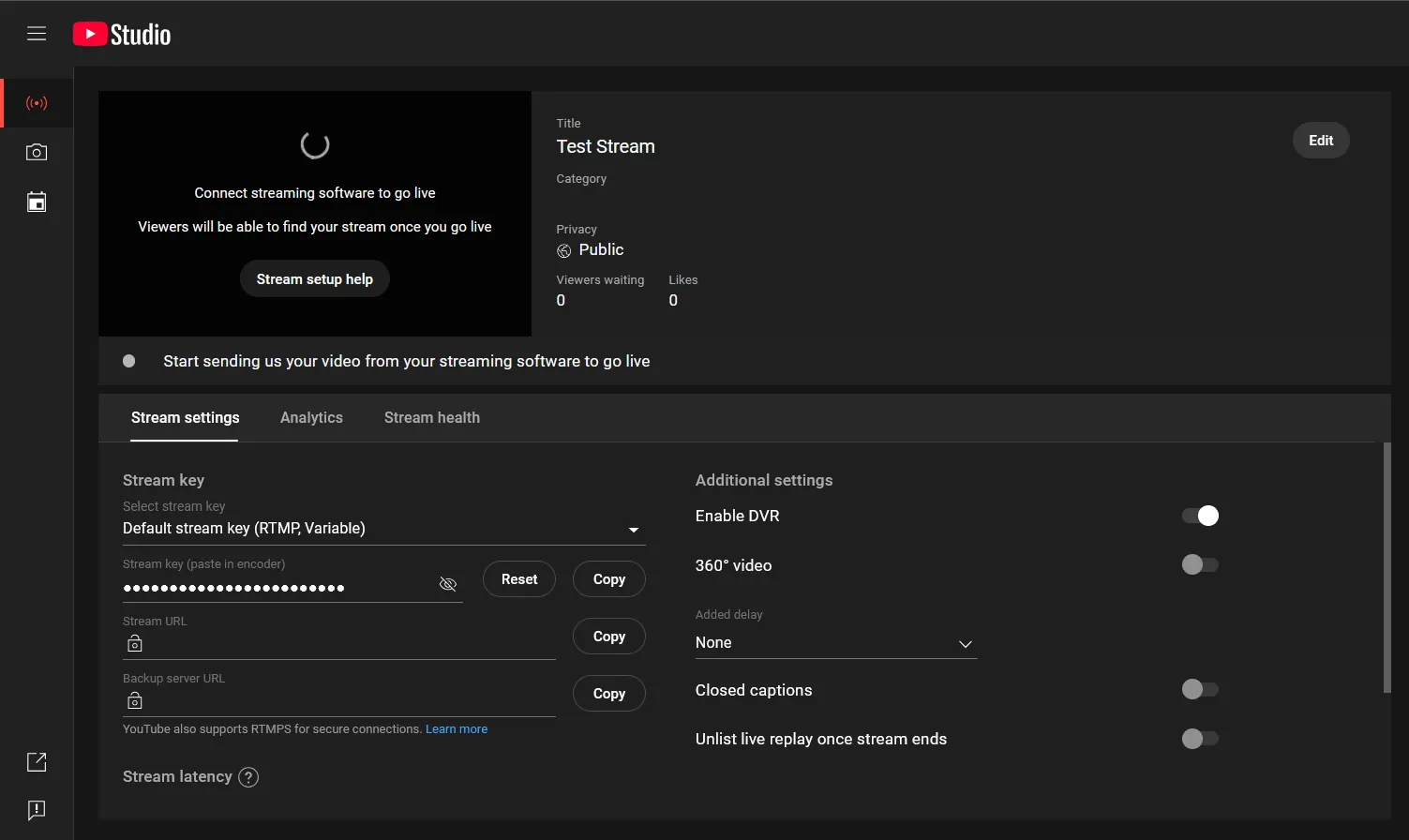
YouTube Studio is where you’ll input all of the settings and keys for your stream before you go live on YouTube.
3. Add Text to Attract Viewers
Your stream’s title, description, and tags are what will help attract viewers and increase your live stream’s discoverability on YouTube! Make your title engaging and relevant to your channel's content, including keywords related to your niche; for example, a Fortnite gamer streaming gameplay might title their stream “Live Fortnite Gameplay - Performance Cup Finals”
For your description, write a few clear, informative sentences targeted toward your audience of what your live stream will be about. A cooking live stream might write “Grilling chicken with lime outside on our patio barbeque! Join in for grilling tips and we’ll unveil our favorite chicken side dishes.”
Then, add specific tags that further describe your stream; these help YouTube categorize and suggest your video to potential viewers. The gamer mentioned above might use tags like #fortnite #battleroyale and #fortniteranked, while the cook could try #chicken #grilling and #summerrecipes. Additional general tags like #youtubelive, #gaminglivestream, or #livechef can also help attract the right audiences.
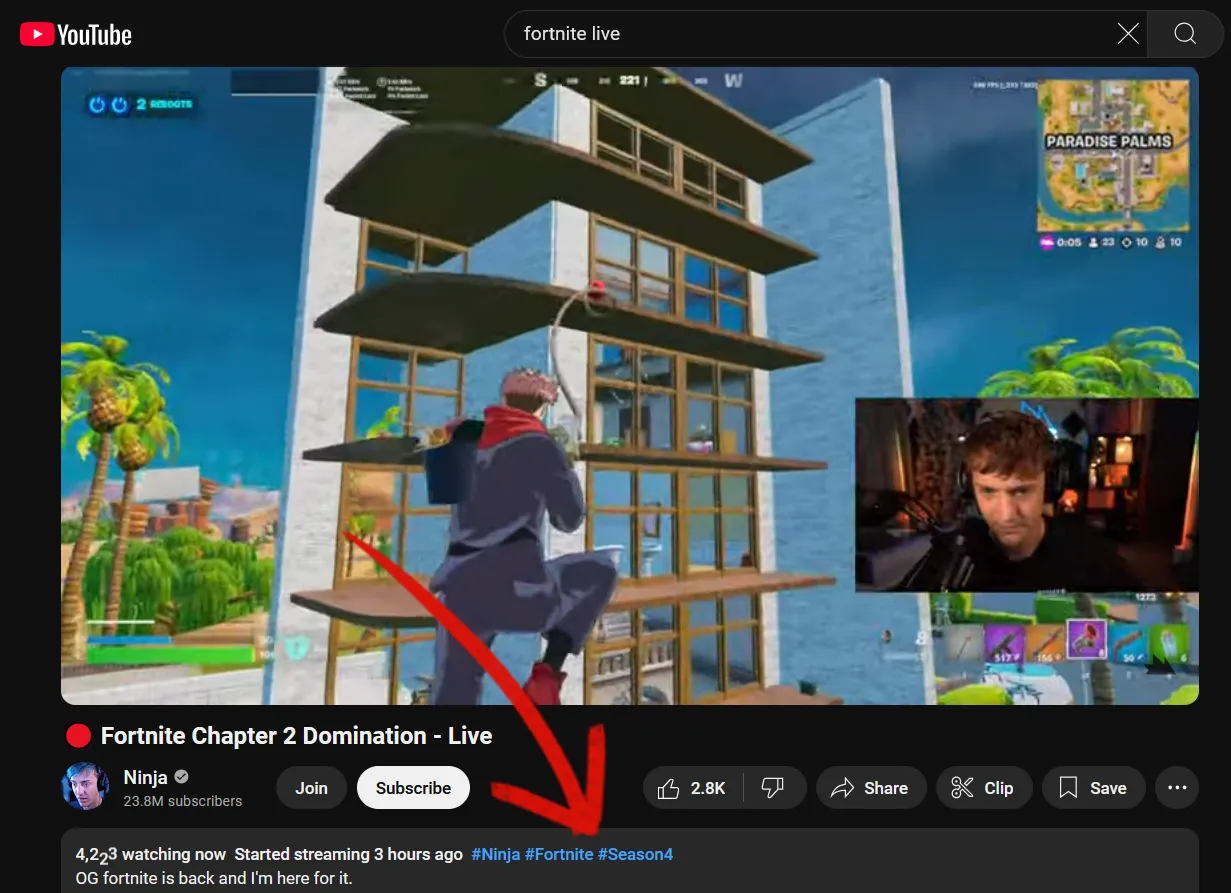
Legacy Fortnite player Ninja uses a trio of tags to help viewers more easily find his live Fortnite streams on YouTube.
4. Check Your Settings
Before going live on your YouTube channel, make sure that your video and audio settings are optimized, and your internet connection is stable. Check your camera or webcam settings to ensure that your video is sharp and well lit; natural light (positioning yourself by a window) can work, but for more even, flattering lighting an inexpensive ring light, light box, or key light work especially well, and can help make you look great on camera!
In the audio department, make sure your microphone is working properly and your voice can be heard clearly; external mics are recommended for the best sound quality. Then, check your internet upload speed to ensure it’s good for live streaming; at least 2.5 Mbps for 720p streaming or 3Mbps for 1080p resolution. To double check everything, you can record a test video in software like OBS and watch it back before you go live, or simply do a quick unlisted/private test stream on YouTube.
5. Promote Your Live Stream!
Start the hype by scheduling your live stream using YouTube’s scheduling feature to notify your subscribers; this will allow viewers to set reminders about your upcoming stream, ensuring a higher turnout.
Then, promote on social media - share your upcoming live stream details on platforms like Twitter and Instagram, building anticipation further by sharing what viewers can expect during the stream, or even posting a custom graphic about your live streaming event. Engaging with your existing community on social platforms like Discord can also help build your audience.
Streaming from a Gaming Console
Live streaming directly from a gaming console is pretty straightforward, as many consoles come with built-in streaming features. Both PlayStation 4/Playstation 5 and Xbox consoles allow you to stream directly to YouTube Live. Simply link your YouTube account to your console and use the YouTube app broadcast options within the game’s menu to go live.
For higher quality YouTube live gaming streams, you can use a capture card; this will connect your console to your PC, allowing for better visual quality, custom overlays, and real time chat interactions through streaming software. Do a short private test stream before you go live to identify any technical or lag issues, as using a capture card can have its own challenges at times.
Pro Tips for Live Streaming on Your YouTube Channel
- Create Engaging Content: plan your stream around content that is entertaining and valuable for your audience! Extra interactive elements, such as Q&As, live tutorials, or chat polls, help keep your viewers engaged and conversing in your YouTube chat.
- Use Good Gear: poor camera, lighting, or sound quality can result in a poor viewing experience, driving viewers away before they’ve even had a chance to check out your content. Make sure you're using a high-quality camera and mic, and that you’ve done a quick test to make sure everything’s working correctly.
- Plan Ahead: Even if your stream vibe is informal, having a basic outline or script helps maintain focus and flow. Note some talking points ahead, including upcoming streams or events to tell your viewers about, or topical points relating to the day, the game you’re playing, the food you’re cooking, the music you’re creating. The point is to make your viewers feel like they’re part of what’s happening on screen when you go live.
- Interact with Your Viewers: Speaking of making your viewers feel like they’re part of it all, your live chat is one of the most engaging aspects of YouTube Live! Respond to comments from your audience, reply to questions, and ask your audience for their input and thoughts throughout your live stream. Remembering a little about each of your most regular viewers is also great for community building!
- Promote Your Streams: Share your upcoming YouTube streams on other social media platforms like Instagram, Twitter (X), and Discord to reach a broader audience. Use YouTube’s own tools, like the YouTube community tab, to promote your stream in advance and encourage your subscribers to tune in.
- Use Your Analytics: After your stream, take time to utilize your YouTube Analytics and review your live streaming performance. YouTube offers robust analytics that can help you track watch time, viewer demographics, and engagement rates; study how your audience watches your stream, and use these insights to improve your future live streams.
Team Up Your YouTube Live Streams with Fourthwall!
Whether you're a content creator, gamer, musician, or business owner, Fourthwall offers so many great tools and solutions for your live streaming ventures on your YouTube channel. In addition to letting you launch your own website, offer memberships to your audience, and connect your socials, Fourthwall integrates seamlessly with YouTube to help content creators and businesses sell merch through YouTube Shopping!
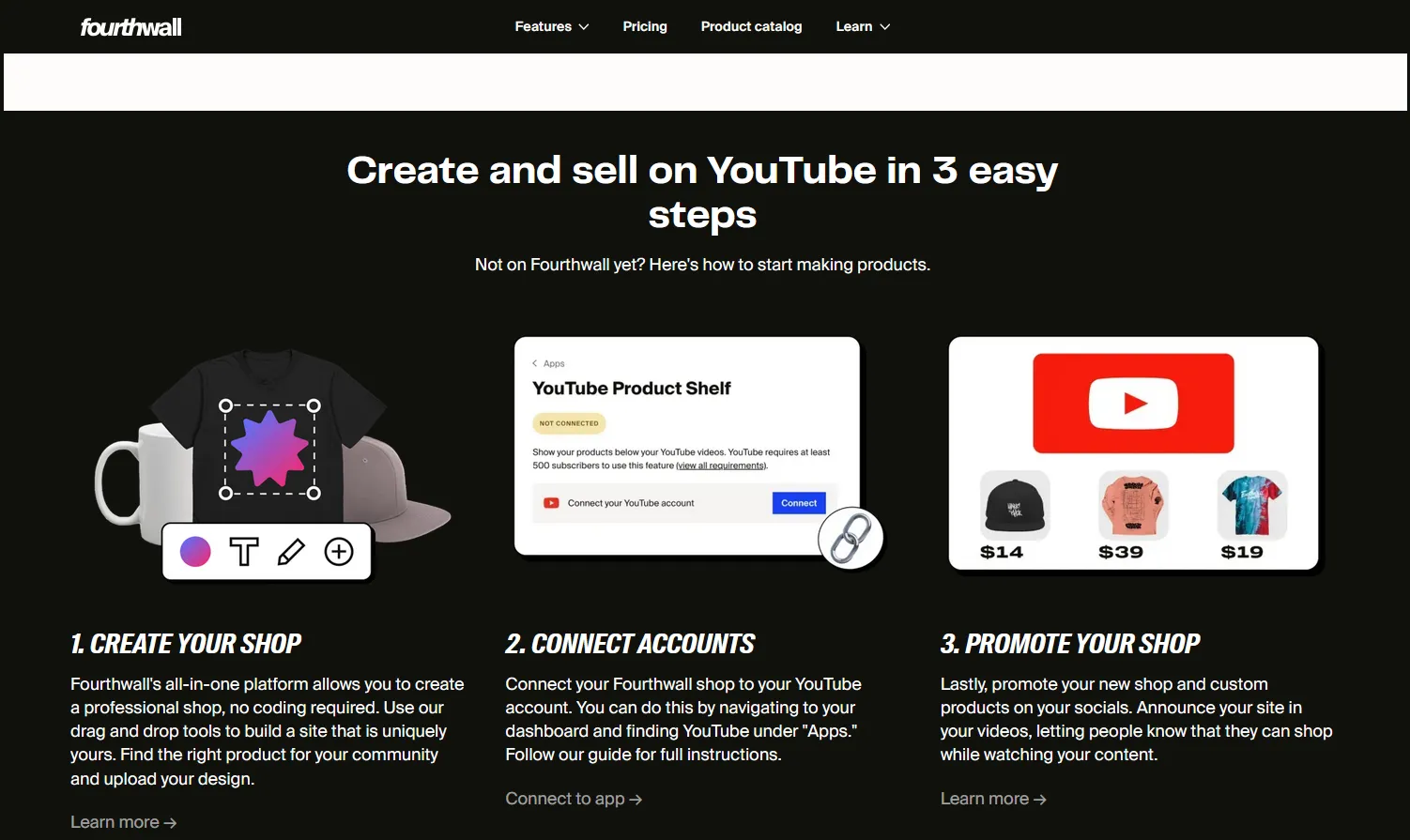
With Fourthwall, you can create your own ecommerce storefront filled with customized print on demand merchandise, digital downloads, and other goods. Then, you can promote your store during your YouTube live streams so people can shop in real time while watching your content, directly connecting your audience with your brand. Get started on Fourthwall now to make the most of your YouTube Live broadcasts!

